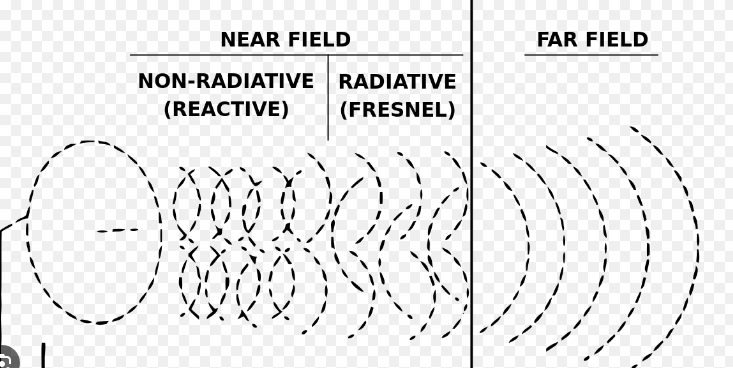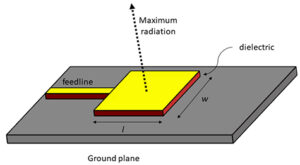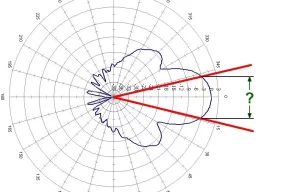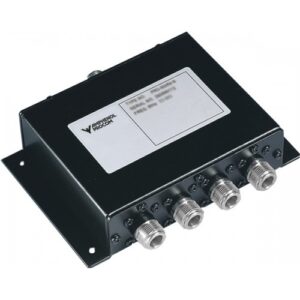Table of Contents
Proximity
The major factor that determines whether electromagnetic interference can be classified as near-field or far-field is its proximity to the source . In general, near-field EMI is typically found within a few wavelengths of distance from the source. For example, a microwave oven situated in a house could be considered to create a near-field EMI at the distance between 2 and 3 meters, with appliances as radios or friends’ laptops perhaps being affected. At the same time, anything outside the closeness of one field and more can be classified as far-field. Obviously, in the case of the cellphone tower, the impact could be satisfactory far from it to the very city borders, depending on its power capabilities and the quality of the antenna . While typical operation quality for home routers is somewhere less than 0.1 watts, the cells towers broadcast their signal at powers more than 20 watts.
Understanding the factor affecting electronic devices is pivotal for its installation as any devices that produce near-field EMI should not be in close proximity to sensitive equipment unless adequate shielding is implemented. Moreover, on a practical level, always trying to keep at least 15 cm distance between smartphones and any sensitive electronic devices can be useful for a person with a pacemaker, as more magnetic effects are noted in the near-field, while the far-field effects are.
Nature of Fields
The character of the fields in near-field and far-field EMI is quite different, which results in the different impact and behaviors. It has already been mentioned that in the near-field, surrounding the source, currents do not dissipate while the fields do travel up and down. Depending on the type of near-field source, fields can be predominantly magnetic or electric in form. For instance, an industrial-sized motor can easily generate strong near-field magnetic flux up to one meter from the source of emission. The detecting device must be within a meter range from the source of emission to be interfered with as well. However, beyond the near-field region, all types of fields turn to free-space electromagnetic waves.
In far-field region, loss of coupling of electric and magnetic fields results in them being electromagnetic waves traveling through the air c. He important property is that the electric and magnetic fields are coupled and are both perpendicular to each other and to the direction the wave is traveling. This allows the wave to move across long distances without diminishing in effect. As a result, in far-field region, the electric and magnetic fields from the source remain relatively constant in magnitude as far-field effect decreases as 1/R. The example of far-field electromagnetic waves radiation is a radio station broadcasting at 100 MHz. For instance, a standard 50,000 watt radio station located in the city where all the town houses can broadcast 100 MHz of signal across a fairly good part of the city. The source keeps the electromagnetic waves from moving to houses further away. In the respect of Wi-Fi, far-field radiation patters are useful for understanding where to place and face the antenna in order to avoid dead spots in a house or office. The design of the antenna, including such modifications as gain – 9 dB in the average household Wi-Fi, faces far-field radiation equally.

Coupling Mechanism
The coupling mechanism of electromagnetic interference is vastly different between the near and far field, which directly affects how interference is managed. Near field coupling is primarily magnetic or electric induction. In a realistic scenario, in an office with a desktop computer and monitor or a smartphone, a computer’s power supply on the office desk might have a transformer. When this transformer induces a magnetic field within 30 cm from the varying magnetic induction, it can interfere with the operation of the monitor at an adjacent desk . The operation can be interfered with because the rapidly varying magnetic field creates small induced current within the electronic circuit next to it, theoretically distorting the signals and interfering with the function of such a device.
Far field EMI coupling is primarily through electromagnetic radiation. An everyday example is a home audio system or television reception that might be interfered with because their cellular base station or other transmitting station is too close to the house or on a straight path line with the devices. A nearby station will often have a power output of 20 to 50 watts, making it very easy to couple with the house receivers or speakers if they are not shielded and well filtered. The best mitigation measures for each of these EMI types are equally different. For near field shielding, a high magnetic permeable material like mu-metal can be used as a wrap to prevent the electromagnetic fields from penetrating the electronic devices. For the far-field interference, band-pass filters work well because they allow some frequencies to pass while blocking others.
Distance and Frequency
The most important factor that affects whether electromagnetic interference will be considered near-field or far-field is the distance that the source travels. Very generally speaking, the near-field is up to one wavelength from the source and the far-field is beyond the near-field. A more specific definition for the far field is r> λ/2π or || > λ/6.2832, typically beyond one wavelength from the source. When one is in the near-field, the magnitude of the field source decreases much faster than when one is in the far-field. An example of a near-field distance would be if a Wi-Fi at 2.4 GHz router has a wavelength of about 12.5, then, the distance affected by the device would be about 12.5cm from the Wi-Fi router because beyond that distance, the Wi-Fi router would be seen as acting in the far-field region hence, the affected by the device here would be the distance of 12.5cm.
The far-field begins where the near-field ends, which means it is generally at points after a distance beyond one wavelength from the source. In the far-field, one can consider r ≥ λ/2π or || ≥ λ/6.2832. The far-field has an inverse square law and this means as one increases the distance from a source with the far field, the magnitude of the affected field decreases as a function of the square of the magnitude of distance from the source. A typical example of an application of inverse square law is if a radio transmission tower is sending a signal of 100 MHz so the wavelength of the signal would be about 3m. If one is situated at beyond the three meters, then one would be effectively considered to be beyond the near field and this means the radio signal would be considered as being in the far-field, but the signal can travel for kilometers and the effect will decrease by kilometers away from the signal tower, while the decrease would also depend on the magnitude of signal being sent.
One other factor related naturally to the distance is the magnitude of the frequency of the electromagnetic source. EMI with higher frequency has shorter wavelength and so it disperses more quickly than when the source has a lower frequency. Generally, one would probably have more of the near-field being in effect than the far-field but this would be offset then, by the resultant decrease effect of the far-field. For instance, 5 GHz Wi-Fi source would have a range of lesser distance than in a 2.4 range Wi-Fi source because the former would have a higher frequency and thus shorter wavelength @{$Kei19}.







